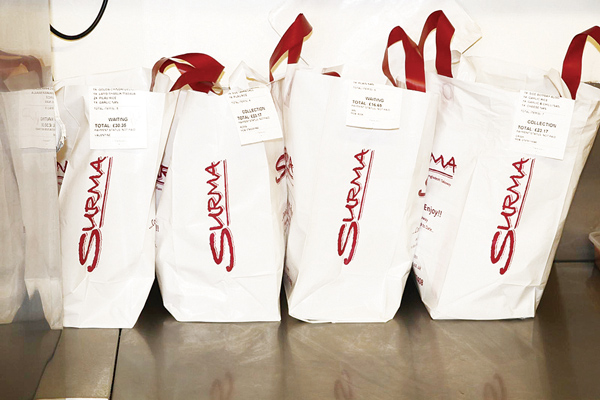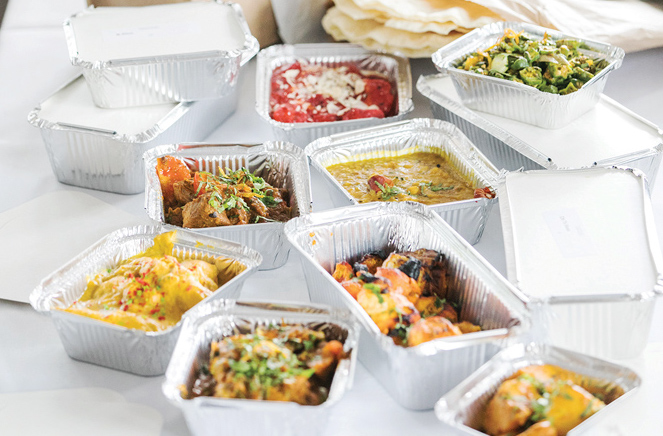DESPITE TABLE SERVICE (finally) returning to the UK hospitality industry, takeaway meals will continue to be important for a long time to come. Many curry lovers in the UK order a takeaway instead of going for a sit-down meal, so getting the takeaway right is always important.
We’d be naive to assume that everyone in the country will rush back to restaurants now that they are open. There’s still a lot of trepidation around the country, with many people waiting to see what happens before they go out and eat within a restaurant setting.
Habits will have changed forever, and normality may still be a long way off. Therefore, takeaway meals are likely to still be an essential part of any restaurant’s business model going forward.
The question is, what can businesses do to make their takeaway meals replicate that restaurant quality feel? While the food is often similar, there is usually a difference between restaurant quality and what you might get as a takeaway; here are a few ways to bridge that gap.
Perception makes all the difference
It all starts with a restaurant’s perception of takeaway food and their attitude towards it. If a restaurant treats their takeaway dishes with the same attention they devote to sit-down meals, this will become apparent to the customer. It communicates to them that all food from the restaurant is of the same standard. It demonstrates that takeaway customers are just as valued as those who visit for a sit-down meal.
If however, the restaurant views takeaway meals as less important, then this too could be reflected in the food and the customers may pick up on this. As a result, those customers may choose to avoid that restaurant. If they didn’t enjoy their takeaway, they’ll be unlikely to ever visit for a sit-down meal, fearing a similar experience. This is why takeaway food needs to be considered just as important as any sit-down meal.
Taste and quality is key
It’s important that any food cooked for takeaway meals is of the same quality as the dishes served in the restaurant. Customers who frequently visit for a sit-down meal will be able to tell the difference if this is not the case.
Customers who order a takeaway are likely paying the same as those who enjoy a sit-down meal, so they must receive the same attention to detail when it comes to food preparation. Ensure the same ingredients are used regardless of whether it’s a takeaway or restaurant dining.
Essentially, don’t cut corners when it comes to food cooked solely for takeaway; treat every meal like it was going out of the kitchen and onto someone’s table. The only difference between the two is that the table in question just happens to be in a different building.
Pay attention to presentation
The presentation of a takeaway is never going to be able to match that of a sit-down meal. A takeaway is a very different experience, and while it can match a sit-down meal in terms of taste and quality, aesthetics is a whole other matter. The good news is customers don’t expect a takeaway to resemble the presentation of a meal served in-house. They are far more concerned with taste, quality and value.
However, that doesn’t mean a restaurant shouldn’t endeavour to make their takeaway meals resemble their sit-down dishes as much as possible. The more similar they appear in their presentation, the more customers will feel like they are eating a restaurant-quality meal. Presentation always counts for a lot when it comes to enjoying food, so this should always be considered.
If you can find ways for your takeaway dishes to be more aesthetically pleasing in their presentation, then customers will have a better experience. Remember, you sample food with your eyes before your tastebuds.
Consider your packaging
Packaging is heavily connected to presentation, but rather than serving your takeaway food in the standard aluminium containers with card lids, try to investigate other forms of packaging. Restaurants which pride themselves on healthy dishes should consider more sustainable packaging; not only is this good for the environment, but it will also win the hearts of customers who care about these issues.
By investing in new forms of packaging, you can also arrange your food to match your on-plate presentation more closely. This allows you to deliver and serve your food in a way that reflects your sit-down dining experience, rather than the typical takeaway presentation. It may be a small detail, but it counts for a lot when it comes to takeaways capturing that restaurant feel.

The social factor
Many restaurants use social media and other forms of advertising to share delicious-looking pictures of their cooking. The images are usually of food cooked in the restaurant and reflect what a dish would look like when brought to your table. This is something every restaurant should do – and continue to do. But don’t forget to showcase snaps of your takeaway food too.
Have some professional pictures taken; this is because many of your customers will only be ordering food for takeaway, perhaps for the foreseeable future.
Marketing materials and images that simply show your food on a plate may not be enough to tempt a customer into ordering a takeaway. However, if your pictures of your takeaway meals look just as delicious as your plated ones, then seeds will be planted in the minds of your customers. This will make them far more likely to pick up the phone (or use an app) and order a takeaway from you.
Research and recharge
When the pandemic struck, and takeaways became the restaurant trade’s only lifeline, the curry industry was quick to adapt. Many restaurants already had a takeaway infrastructure in place, so they could pivot quickly and continue to earn a profit.
However, restaurants in the fine dining business across all cuisines were much slower at adopting this approach. In the eyes of some restaurants, takeaway was simply not something they’d consider. To them, serving food was a pageant, and the experience could not be replicated through takeaway.
Yet as the months went on, many fine dining establishments needed to change this policy – or they risked going out of business. In time, they developed some creative and novel ways to sell their food as a takeaway, but without compromising on their values or the experience.
Naturally, some concessions were made, but these restaurants made serving takeaway food into an art. They all did different things, but much of it had to do with presentation and artistic flair. Investigate what some of these restaurants did and see if you can apply it to your own takeaway meals.




